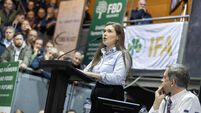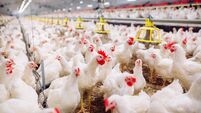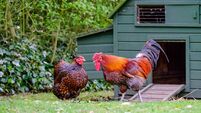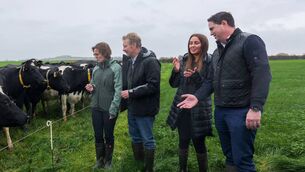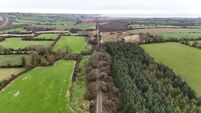Economic Breeding Index drops by €97 with new updates

With the new update, data from the 2015 herd will become the new baseline for figures on EBI and Beef Indexes.
Dairy farmers will see their herd’s Economic Breeding Index (EBI) values fall by €97 this week as the Irish Cattle Breeding Federation (ICBF) introduces upgraded indexes.
Both the EBI and Beef Indexes are being updated.
The Irish Cattle Breeding Federation (ICBF), the body responsible for compiling the indices, has stressed that, although herd figures may drop, “all animals will experience an equal shift, it is not a re-ranking”, with the new update.
The old system used the 2005 herd for its baseline population of genetics. However, now, with the update, the 2015 genetic values will become the new baseline, comparing cattle to a more recent figure.
Three key changes underpin the revised EBI:
- A base population change influencing milk and fertility sub-indexes,
- Updated economic values across all traits, and
- New models for the health and management sub-index.
On the old system, the baseline for comparison was the 2005 herd. With the update, the 2015 genetic values become the new reference point, giving a more relevant comparison for today’s cattle.
Farmers will see a sudden drop of €97 on their EBI following the update. This is because the genetic progress from the 2005 national herd to the 2015 herd was an increase of €97 in genetic value.
ICBF explains it as a shift: a herd’s top-performing animal is still performing as before, but measured against a stronger base.
The reduction is split between a €52 cut from fertility and a €45 cut from milk. The new base is derived from 2015-born cows with milk records from 2017–2019.
Parity weightings for milk have also been revised: parity one animals now carry a 41% weighting, parity two at 33%, and parity three and above at 26%.
The new milk base price is set at 38cpl plus VAT, or 40cpl excluding bonuses. Rising input costs since 2019 are also reflected in the model: feed is up to €370/t, fertiliser at €550/t, energy at €0.25/kWh, and labour at €17/hour.
Further updates include:
- Maintenance and heifer costs: now split, with 63% assigned to cow maintenance and 37% to heifer rearing, previously part of cull cow figures.
- Economic values: maintaining an extra kilo of liveweight now carries a penalty of €1.06, up 43% due to higher feed costs. Heifer growth costs are valued at -€1.80/kg, equating to a reduction of €0.63 per lactation.
- Health and management traits: new models bring a scale change for lameness, mastitis and temperament. Locomotion scores are introduced as predictors in health evaluations, with a move to single-step genomic evaluation to improve accuracy.
All base traits except bovine TB will now be benchmarked to 2015 figures.
ICBF has warned farmers they will see a decline in milk volume, with over 60% of herds now in the negatives. But the advice is to focus more on milk solids.
“Milk and fertility are still the two key drivers for EBI,” ICBF said, adding that farmers “just have to recalibrate their thinking” when it comes to the lower figures.
The Beef Index was last updated in 2023 and will undergo a few smaller updates this time round. Last revised in 2023, the Beef Index has now been refreshed with new predictive models and data sources.
Economic models are being updated with predictive figures for 2030 rather than current beef market prices and production costs. Foreign genetic data, previously integrated through a French system, will now be blended into an Irish scale, allowing Estimated Breeding Values (EBVs) to be treated like phenotypic evaluations. This should improve accuracy, particularly for traits such as carcass weight PTA.
ICBF has also incorporated additional data from the BEEP and SCEP schemes, with further quality checks and herd-level editing. These schemes will now be treated as “correlated traits” within the index.
Teagasc Grange has contributed predictive figures for 2030, while CSO data is being used to set new pricing figures within economic values.
Heifer rearing costs have been reduced in the model, not because input costs have fallen, but because fewer replacements are being reared.
To maintain confidence in the SCEP scheme, ICBF said it would maintain the population index average at the four-star value for both Terminal and Replacement indexes.
Looking further ahead, the ICBF has predicted a 2% annual rise in beef prices between 2030 and 2035. It has also committed to reviewing economic values again next year in light of beef market trends.

